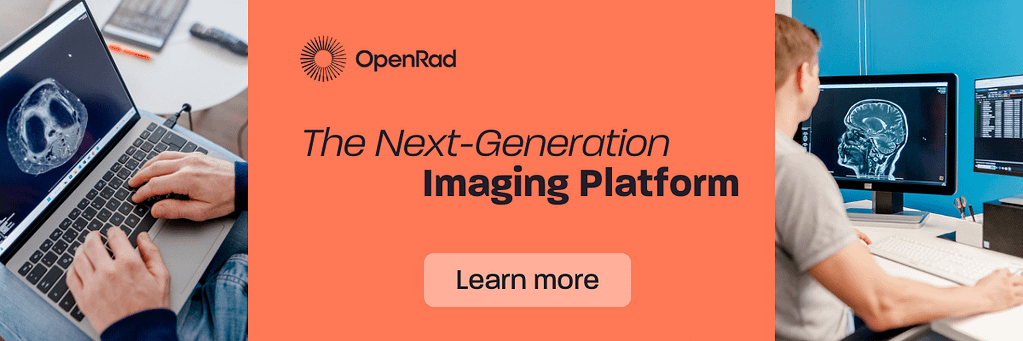In recent years, the healthcare sector has experienced a significant transformation, largely driven by technological advancements. To migrate to cloud computing has emerged as a game-changer, particularly in fields like radiology.
📖 Author: Emmanuel Anyanwu | Alberta Health Services, Canada
As technology progresses, the traditional methods of managing and analyzing medical imaging data face challenges related to scalability, accessibility, and security.
In response, to migrate to cloud computing has emerged as a transformative solution, offering radiology practices unparalleled opportunities to streamline operations, enhance collaboration, and elevate patient care.
Migrate to cloud: Definition
To migrate to cloud refers to moving data, applications, and other business elements from on-premises infrastructure to a cloud computing environment. This shift allows organizations to store and access data and applications over the internet, rather than relying solely on local servers or hardware.
This paradigm shift leverages the power of remote servers and advanced computing technologies accessible via the internet, revolutionizing how radiologists interact with patient images and data.
Why radiology embraces to migrate to cloud
The decision to migrate to cloud is not merely a technological trend but a strategic imperative driven by several compelling factors:
- Scalability: Radiology practices experience fluctuating demands for imaging services. Cloud-based solutions offer scalability, allowing practices to dynamically adjust resources in response to patient volumes and operational requirements without costly infrastructure upgrades.
- Accessibility: Cloud computing enables seamless access to medical images and patient data from any location with an internet connection. Radiologists can review images remotely, collaborate with colleagues in real time, and provide timely consultations to referring physicians—ultimately improving patient outcomes.
- Efficiency: Cloud-based picture archiving and communication systems (PACS) streamline image storage, retrieval, and sharing processes. Advanced features such as automated workflows, image compression, and intelligent routing optimize efficiency—reducing turnaround times for diagnoses and treatment plans.
- Security & compliance: Data security is paramount in healthcare, especially concerning sensitive patient information. Cloud providers adhere to stringent security protocols and compliance standards, such as HIPAA (Health Insurance Portability and Accountability Act), safeguarding patient privacy and mitigating the risk of data breaches or unauthorized access.
Advantages of migration to cloud in radiology
To migrate to cloud computing holds numerous advantages specifically tailored to the field of radiology:
- Enhanced image storage & management: A cloud-based PACS enables radiology departments to store and manage vast amounts of medical images efficiently. Advanced features such as image compression and deduplication help optimize storage space while ensuring rapid retrieval of patient data.
- Improved collaboration: Cloud-based platforms like OpenRad’s Next-Generation Imaging Platform facilitate collaboration among radiologists, referring physicians, and other healthcare professionals. Real-time access to medical images and patient records streamlines communication and decision-making processes—leading to more accurate diagnoses and treatment plans.
- Faster image processing: Cloud-based infrastructure leverages powerful computing resources to accelerate image processing tasks such as reconstruction and analysis. Radiologists can leverage artificial intelligence (AI) algorithms deployed on the cloud to automate repetitive tasks and expedite diagnosis workflows.
- Compliance & data security: Cloud providers adhere to stringent regulatory standards such as HIPAA (Health Insurance Portability and Accountability Act) to ensure compliance with data protection laws. By migrating to the cloud, radiology practices can enhance data security and privacy while maintaining regulatory compliance.
Outlook & trends
Looking ahead, the migration to cloud computing is poised to revolutionize radiology and shape the future of healthcare in several ways:
- AI integration: Cloud-based AI algorithms will play an increasingly significant role in radiology, enabling advanced image analysis, predictive analytics, and personalized medicine. Integrating AI capabilities into cloud-based PACS will empower radiologists to make more accurate diagnoses and deliver tailored treatment plans.
- Hybrid cloud solutions: As healthcare organizations continue to prioritize data security and compliance, hybrid cloud solutions combining public and private cloud infrastructure will gain traction. This approach allows organizations to leverage the scalability of public clouds while retaining sensitive data within private, on-premises environments.
- Edge computing: The proliferation of edge computing devices will enable real-time processing of medical imaging data at the point of care. By deploying edge computing solutions alongside cloud infrastructure, radiology practices can achieve faster image analysis and reduce latency in diagnostic workflows.
- Interoperability & data exchange: Cloud-based platforms will facilitate seamless interoperability and data exchange between disparate healthcare systems and electronic health records (EHRs). Standardized protocols and application programming interfaces (APIs) will enable efficient sharing of medical images and patient data across healthcare networks.
In conclusion, migrating to the cloud represents a transformative journey for radiology practices—unlocking unprecedented opportunities to enhance efficiency, collaboration, and patient care delivery.
By embracing cloud-based solutions, radiologists can transcend the limitations of traditional infrastructure, harnessing the power of advanced technologies to drive diagnostic excellence and innovation in healthcare.
As the healthcare landscape continues to evolve, cloud migration remains a cornerstone of radiology’s digital transformation, empowering practitioners to navigate the complexities of modern medicine with confidence and agility.
—
Would you 100% migrate to cloud? Share your thoughts via the comment section below.
Want to join a great team? Check out our careers section. We are always looking for outstanding talent—from application specialist to software developers.
📷 Photo credits: daniela-mueller.com


